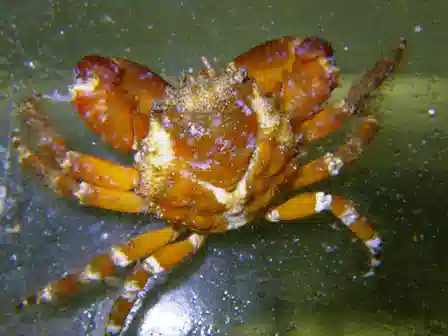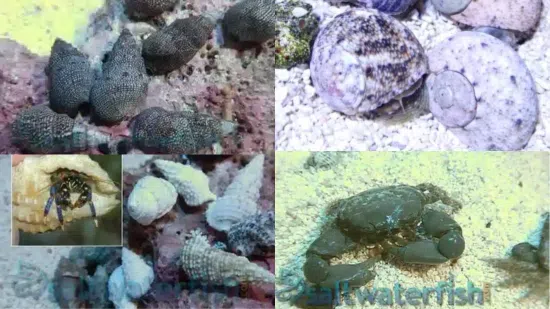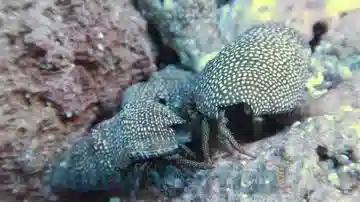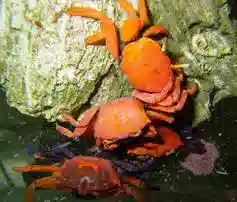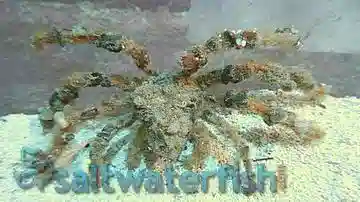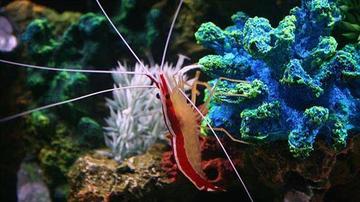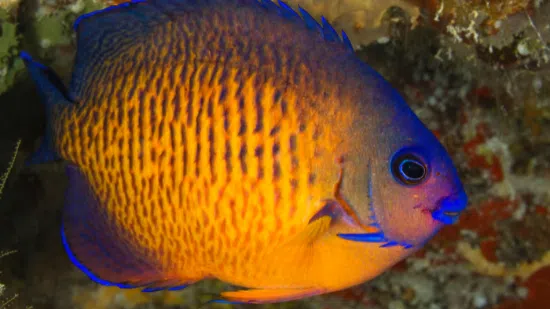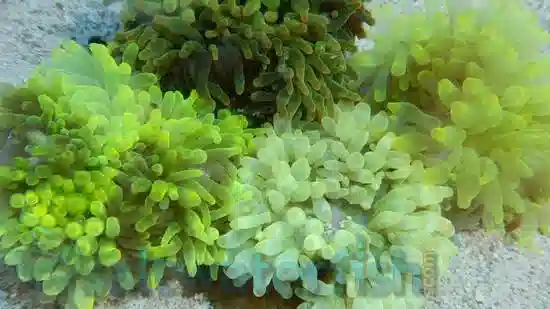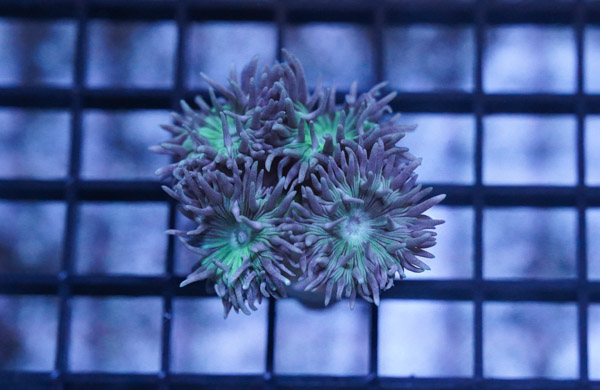The Anemone Crab comes in brown and orange in color, and adds a splash of beautiful color in to your aquarium. It is very peaceful in nature and more than one can be kept in a tank easily. The Anemone Crab has a symbiotic relationship with anemones, and will accept most anemones as their host. It clings to the anemones' sides, base or the underside part, without causing tissue damage. The Anemone Crab doesn't need any anemones to thrive and makes a great addition to any reef tank. It features a long antennae and three pairs of walking legs, with its head connected to the thorax, which is covered by a shell called as carapace. The Anemone Crab has a smaller abdomen and a tail which has been tucked beneath the carapace. It features large front claws, which they use to as a form of protection to fend off potential predators. The Anemone Crab always prefers to live in pairs, under the protection of anemone. The Anemone Crab chiefly feeds on planktonic foods and mucus from the host anemone. Additional supplements of meaty tablet foods placed next to the anemone has also proved beneficial for its continued good health. The Anemone Crab is generally aggressive towards other similar sized crabs, and should not be kept with larger crabs which may attack it. It may break off their claw just to distract the predator, so that the crab can escape. The Anemone Crab undergoes molting when it sheds their exoskeleton in order to grow a new one. Therefore, the addition of iodine supplements will be beneficial for its molting activity. Be sure to keep the Anemone Crab in a well-established tank, with anemones, because if a clownfish drives the anemone crab from its host anemone, the crab may be harmed. Having said that, it is not that aggressive but attempts to defend their territory from the same, but eventually the clownfish prevails. The Anemone Crab eats microorganisms in the water column and mucus from the anemone that it has a symbiotic relationship with.
